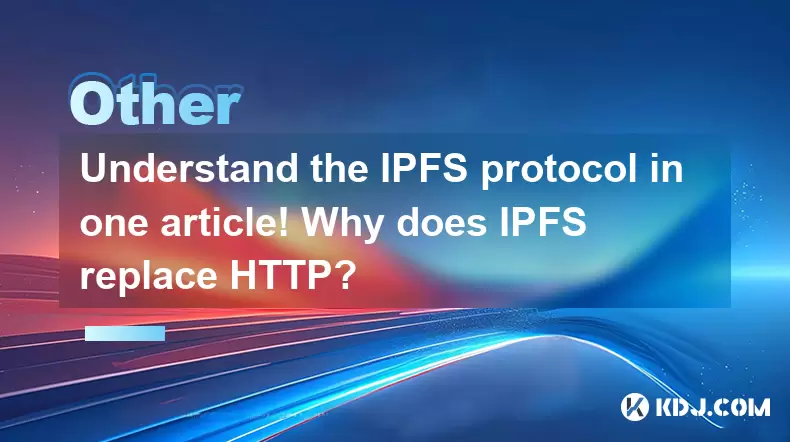-
 Bitcoin
Bitcoin $118300
-0.58% -
 Ethereum
Ethereum $3825
0.11% -
 XRP
XRP $3.137
-0.71% -
 Tether USDt
Tether USDt $0.9999
-0.01% -
 BNB
BNB $803.9
-3.37% -
 Solana
Solana $181.5
-1.94% -
 USDC
USDC $0.9999
0.01% -
 Dogecoin
Dogecoin $0.2238
-2.51% -
 TRON
TRON $0.3358
2.12% -
 Cardano
Cardano $0.7844
-2.16% -
 Hyperliquid
Hyperliquid $43.31
-1.48% -
 Sui
Sui $3.807
-4.04% -
 Stellar
Stellar $0.4203
-1.96% -
 Chainlink
Chainlink $17.79
-3.00% -
 Bitcoin Cash
Bitcoin Cash $567.8
-1.34% -
 Hedera
Hedera $0.2614
-4.30% -
 Avalanche
Avalanche $24.19
-4.46% -
 Litecoin
Litecoin $109.2
-0.74% -
 UNUS SED LEO
UNUS SED LEO $8.969
-0.01% -
 Toncoin
Toncoin $3.404
3.97% -
 Ethena USDe
Ethena USDe $1.001
-0.01% -
 Shiba Inu
Shiba Inu $0.00001307
-3.19% -
 Uniswap
Uniswap $10.33
-1.23% -
 Polkadot
Polkadot $3.884
-4.06% -
 Monero
Monero $312.9
-1.87% -
 Dai
Dai $1.000
0.01% -
 Bitget Token
Bitget Token $4.537
-2.24% -
 Pepe
Pepe $0.00001156
-3.40% -
 Cronos
Cronos $0.1437
-0.89% -
 Aave
Aave $282.8
-2.77%
Understand the IPFS protocol in one article! Why does IPFS replace HTTP?
IPFS, a decentralized file system, uses cryptographic hashes for data integrity and aims to replace HTTP by addressing scalability and duplication issues.
Jun 01, 2025 at 06:01 pm

The InterPlanetary File System, commonly known as IPFS, is a protocol and network designed to create a more efficient, decentralized, and secure method for storing and sharing files. As the digital world evolves, the traditional HTTP (Hypertext Transfer Protocol) has shown limitations that IPFS aims to address. This article will delve into the intricacies of IPFS, explore why it might replace HTTP, and provide a comprehensive understanding of this revolutionary technology.
What is IPFS and How Does It Work?
IPFS is a peer-to-peer (P2P) distributed file system that connects all computing devices with the same system of files. Unlike traditional centralized systems, where files are stored on specific servers, IPFS uses a content-addressable approach. Each file and all of its blocks are given a unique fingerprint called a Cryptographic Hash. When you want to retrieve a file, you use this hash to locate and download the content from any node in the network that has it.
The core idea behind IPFS is to create a single global namespace that can be accessed by any device connected to the network. It combines several technologies like Distributed Hash Tables (DHT), BitTorrent, and Git to achieve this goal. When a file is added to IPFS, it is split into smaller chunks, and each chunk is hashed. These hashes are used to build a Merkle DAG (Directed Acyclic Graph), which represents the file's structure and content.
Advantages of IPFS Over HTTP
One of the primary reasons IPFS is considered a potential replacement for HTTP is its decentralized nature. With HTTP, files are hosted on centralized servers, making them vulnerable to single points of failure. If a server goes down, the content becomes inaccessible. In contrast, IPFS distributes files across a network of nodes, ensuring that content remains available even if some nodes fail.
IPFS also offers improved performance and efficiency. By leveraging P2P networking and caching, IPFS can reduce latency and bandwidth usage. When a user requests a file, IPFS first checks if the file is available locally or on nearby nodes before fetching it from a distant server. This approach can significantly speed up content delivery.
Another significant advantage is data integrity. With IPFS, the integrity of data is ensured through the use of cryptographic hashes. Once a file is added to IPFS, its hash remains constant, making it impossible to alter the file without changing its hash. This feature is particularly beneficial for applications requiring high levels of data integrity, such as scientific research and legal documents.
How IPFS Addresses the Limitations of HTTP
HTTP has several limitations that IPFS aims to overcome. One of the most notable is scalability. As the internet grows, the demand for bandwidth and storage increases exponentially. HTTP struggles to keep up with this demand, leading to slower load times and higher costs. IPFS, on the other hand, can scale more efficiently by distributing the load across multiple nodes.
Another limitation of HTTP is duplication. When multiple users download the same file, each user must download the entire file from the server, leading to redundant data transfers. IPFS solves this problem by allowing users to share files directly with each other, reducing the need for multiple downloads from the same source.
HTTP also faces challenges with version control. When a file is updated, the old version is often lost unless explicitly saved. IPFS uses a versioning system similar to Git, allowing users to access different versions of a file and track changes over time.
Practical Applications of IPFS
IPFS has a wide range of practical applications across various industries. In the web development space, IPFS can be used to host decentralized websites. These websites are more resilient to censorship and downtime, as they do not rely on a single server. Developers can use tools like IPFS Companion and Pinata to easily deploy and manage their decentralized applications.
In the blockchain and cryptocurrency sectors, IPFS is used to store and share large amounts of data off-chain. For example, NFT (Non-Fungible Token) projects often use IPFS to store metadata and images, reducing the load on the blockchain and improving transaction efficiency.
IPFS is also valuable in the scientific community. Researchers can use IPFS to share large datasets and research papers in a decentralized manner, ensuring that data remains accessible and verifiable over time. This approach can enhance collaboration and reproducibility in scientific research.
How to Use IPFS: A Step-by-Step Guide
To start using IPFS, you need to install the IPFS software on your device. Here is a detailed guide on how to set up and use IPFS:
- Download and Install IPFS: Visit the official IPFS website and download the appropriate version for your operating system. Follow the installation instructions provided.
- Initialize IPFS: Open a terminal or command prompt and run the command
ipfs initto initialize your IPFS node. This command will generate a unique identity for your node. - Start the IPFS Daemon: Run the command
ipfs daemonto start the IPFS daemon. This process runs in the background and allows your node to connect to the IPFS network. - Add Files to IPFS: Use the command
ipfs addto add a file to IPFS. The command will return a hash, which you can use to retrieve the file later. - Retrieve Files from IPFS: To retrieve a file, use the command
ipfs get. This command will download the file associated with the specified hash. - Share Files with Others: Share the hash of the file with others. They can use the
ipfs getcommand to download the file from any node on the network that has it.
Security and Privacy Considerations with IPFS
While IPFS offers many benefits, it is essential to consider security and privacy implications. Since IPFS is a public network, anyone can access files that are shared openly. To protect sensitive information, users can encrypt files before adding them to IPFS. Additionally, IPFS supports private networks, which can be used to share files securely within a trusted group.
IPFS also provides mechanisms for managing access control. Users can pin files to ensure they remain available on their nodes, and they can use tools like IPFS Cluster to manage a group of nodes and control data availability.
Frequently Asked Questions
Q1: Can IPFS be used with existing web browsers?
Yes, IPFS can be used with existing web browsers through extensions like IPFS Companion. This extension allows you to access IPFS content directly from your browser without needing to run an IPFS node locally.
Q2: How does IPFS handle file updates and versioning?
IPFS uses a versioning system similar to Git. When a file is updated, a new hash is generated, and the updated file is added to IPFS as a new version. Users can access different versions of a file by using the corresponding hashes.
Q3: Is IPFS compatible with other decentralized storage solutions?
Yes, IPFS can be integrated with other decentralized storage solutions. For example, Filecoin is a decentralized storage network that uses IPFS as its underlying protocol. This integration allows users to store and retrieve files on IPFS while incentivizing storage providers through a cryptocurrency reward system.
Q4: How does IPFS ensure the persistence of data?
IPFS ensures data persistence through a mechanism called pinning. When a user pins a file, it remains stored on their node and is available to the network. Additionally, IPFS clusters can be used to ensure that multiple nodes store the same data, increasing its availability and persistence.
Disclaimer:info@kdj.com
The information provided is not trading advice. kdj.com does not assume any responsibility for any investments made based on the information provided in this article. Cryptocurrencies are highly volatile and it is highly recommended that you invest with caution after thorough research!
If you believe that the content used on this website infringes your copyright, please contact us immediately (info@kdj.com) and we will delete it promptly.
- Dalio's Take: Balancing Bitcoin, Gold, and the Debt Doom Loop
- 2025-07-31 00:51:15
- PENGU Price Plunge? Binance Transfers and Token Transfer Trends
- 2025-07-30 23:10:15
- Navigating Crypto Investment: Bitcoin Mining and the Rise of Cloud Mining in the Big Apple
- 2025-07-30 22:31:15
- Meme Coins, Profit, and Investment: Riding the Crypto Wave in Style
- 2025-07-30 23:10:15
- LivLive's Gamified AR Launch Phase: Level Up Your Reality!
- 2025-07-30 22:31:15
- Bitcoin, Crypto, and the Golden Age: Navigating the Future of Digital Assets
- 2025-07-31 00:10:14
Related knowledge

How to start a business using blockchain?
Jul 28,2025 at 12:36am
Understanding the Basics of Blockchain TechnologyBefore diving into the process of starting a business using blockchain, it's crucial to understand wh...

What is a token on the blockchain?
Jul 21,2025 at 07:00am
Understanding the Concept of a TokenIn the realm of blockchain technology, a token is a digital representation of an asset or utility that exists on a...

Can blockchain be used for identity verification?
Jul 18,2025 at 02:14pm
Understanding Identity Verification in the Digital AgeIn the modern digital landscape, identity verification has become a critical component for ensur...

What is a consensus mechanism in blockchain?
Jul 21,2025 at 03:01am
Understanding the Basics of Consensus MechanismsA consensus mechanism is a critical component of any blockchain network. It refers to the process by w...

How to explain blockchain to someone with no tech background?
Jul 18,2025 at 11:08pm
Understanding the Basics of BlockchainTo explain blockchain to someone with no tech background, it's essential to start with simple analogies and avoi...

Who invented blockchain technology?
Jul 23,2025 at 01:28am
Origins of Blockchain TechnologyBlockchain technology did not emerge from a single inventor or institution. Instead, it evolved through a series of ac...

How to start a business using blockchain?
Jul 28,2025 at 12:36am
Understanding the Basics of Blockchain TechnologyBefore diving into the process of starting a business using blockchain, it's crucial to understand wh...

What is a token on the blockchain?
Jul 21,2025 at 07:00am
Understanding the Concept of a TokenIn the realm of blockchain technology, a token is a digital representation of an asset or utility that exists on a...

Can blockchain be used for identity verification?
Jul 18,2025 at 02:14pm
Understanding Identity Verification in the Digital AgeIn the modern digital landscape, identity verification has become a critical component for ensur...

What is a consensus mechanism in blockchain?
Jul 21,2025 at 03:01am
Understanding the Basics of Consensus MechanismsA consensus mechanism is a critical component of any blockchain network. It refers to the process by w...

How to explain blockchain to someone with no tech background?
Jul 18,2025 at 11:08pm
Understanding the Basics of BlockchainTo explain blockchain to someone with no tech background, it's essential to start with simple analogies and avoi...

Who invented blockchain technology?
Jul 23,2025 at 01:28am
Origins of Blockchain TechnologyBlockchain technology did not emerge from a single inventor or institution. Instead, it evolved through a series of ac...
See all articles

























































































